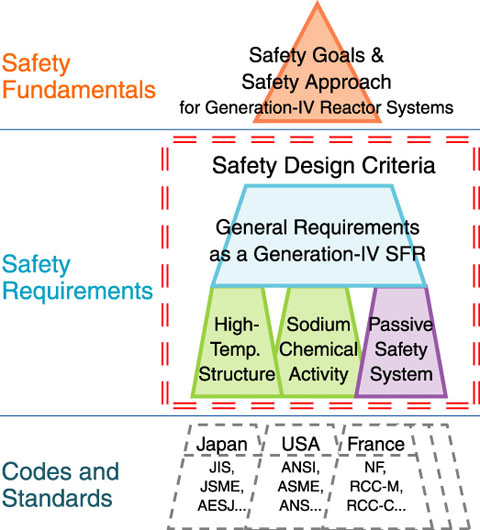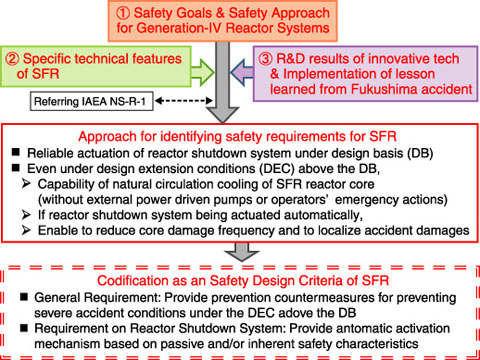
Fig.1-2 SDC in the hierarchy of safety standards

Fig.1-3 Process for establishing new SDC
Generation-IV (Gen-IV) International Forum (GIF) has mainly promoted the research & development (R&D) of reactor systems and equipment, and recently, cooperation to establish safety design criteria (SDC) has started.
Fig.1-2 shows the hierarchy of safety standards. The SDC rank between the upper fundamental standards, and the lower codes and standards. Systems and equipment are manufactured by following the codes and standards, and the SDC systematically specify their design concepts that satisfy fundamental safety principles. No international standards for Gen-IV reactors, including sodium-cooled fast-breeder reactor (SFR), have been established so far, and this will be the first attempt to address this issue.
There are three points to be remembered while formulating the SDC. The first is that the safety standards for the Gen-IV reactor should be stringent, the second is that specific technical features of SFR should be taken into account, and the third is that the R&D results for innovative technologies and the lessons learned from the accident at the Tokyo Electric Power Company, Incorporated Fukushima Daiichi Nuclear Power Station, should be considered.
Fig.1-3 shows their relationship and the process for establishing SDC. “Very low likelihood and degree of reactor core damage” is one of the safety objectives at GIF, and we need to accomplish this objective by following the safety approach of considering unexpected conditions that are severer than the design conditions. SFR has features that could induce the reactivity to increase when core becomes disrupted, and even in an emergency, the overall decay heat can be removed by natural circulation. Then, a reactor can be cooled naturally even in an emergency if recriticality is prevented by controlling reactivity. It is highly expected that Self-Actuated Shutdown System (SASS), a new technology that has been successfully tested in an in-reactor experiment, will have practical application in the case of the SFR.
Thus, the SFR safety goals established at GIF will be achieved when automatic activation of a reactor shutdown system is realized even when unexpected accidents occur, whereas the existing requirements to ensure the activation of the reactor shutdown system should be satisfied without the failure of the design conditions. We can include this in the SDC (1) to adopt measures to prevent core damage in the case of conditions that are severer than the ones specified as the design conditions and (2) to provide an automatic activation system for facilitating the activation of the reactor shutdown system by using natural forces. We also tried to establish SDC for cooling systems and containment systems by following the same process.
We will try to propose this SDC at GIF as a concept that will enable the achievement of a higher level of safety, and s ubsequently, we will aim to realize international standardization.
<Previous: 1 Research and Development of Advanced Nuclear System | Next: 1-2 >